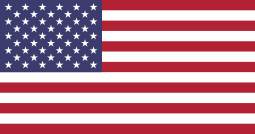Pasture Management 102 - Poisonous Plants for Horses
Poisonous plants for horses can be found in both hay and pasture. As a horse owner or manager, it is important to be able to recognize common poisonous plants in your area. The ability to recognize forages and know what’s normal for your hay/pasture can assist you in determining when something is off or different.
Common Poisonous Plants & Symptoms
Poisonous plants are not harmful until they are eaten by the horses. Other plants are not poisonous but can cause the animal discomfort or pain. Examples include sand burrs, thistles, foxtail, cactus, goat head, stinging nettle, and cockle burrs.
How do horses gain access to poisonous plants? Pastures can be made up of poisonous wildflowers and weeds. Other times cultivated plants or trees that were never intended for horses end up within their reach.
What plants are poisonous or harmful to horses? Cocklebur, nightshade berries, mustard seeds, green acorns, black walnut, and horsetail to name a few.
What are common symptoms suggesting your horse has consumed a poisonous or harmful plant? Colic, red or brown urine (white snakeroot or wilted maple), seizures (bracken fern or horsetail), disorientation (locoweed), and stocking-up/founder (black walnut shavings). Mouth blisters can result from consumption of buttercup or foxtail. Endophyte infected fescue can cause reproductive problems when fed to mares during late gestation. Photosensitivity can result from the consumption of wild parsnip or mold infected clover. Mold infected red clover can result in the slobbers and moldy sweet clover can result in bleeding. It’s important to note not all clover, red clover, or sweet clover is harmful to horses, but rather mold infected clover is the culprit to watch for.
Poisonous plants for horses resulting in death when consumed include chokecherry, foxglove, yew, boxelder seeds, poison hemlock, and water hemlock. Initial signs of chokecherry include convulsions, frequent urination/defecation, gasping and tremors. Additional symptoms of yew consumption include nervousness, difficulty breathing, lack of coordination, and convulsions. Symptoms can vary depending on severity and time since consumption. Knowing what is normal for your horse and keeping a close eye on them daily is important to catch early onset of poison and other conditions or emergencies.
Prevention & Protection
How can you protect your horse from poisonous plants? Good pasture and forage management practices are the best way to protect you horse from eating poisonous plants. Providing sufficient high-quality forage 24/7 is paramount, as horses will often not consume poisonous plants unless it is all they have available. For horses on pasture, manage the pasture to prevent overgrazing and to control weeds. In addition, be knowledgeable about the plants growing on your property so that you can recognize new ones that could be dangerous. For horses being provided a hay ration, take time to inspect the hay for weeds. When possible, purchase hay from reputable producers who offer certified noxious weed free hay.
These management techniques should be your first line of defense. However, this article is not a comprehensive list of poisonous plants for horses. We encourage you to research the poisonous plants for horses that are present in your region. The University of Minnesota offers resources for horse owners on the topic of poisonous plants in the Midwest. Contact your local extension office or ag school for information on poisonous plants in your area.
To diagnose and treat a horse who has consumed a poisonous plant, you should contact you veterinarian immediately.
 Made In USA
Made In USA













